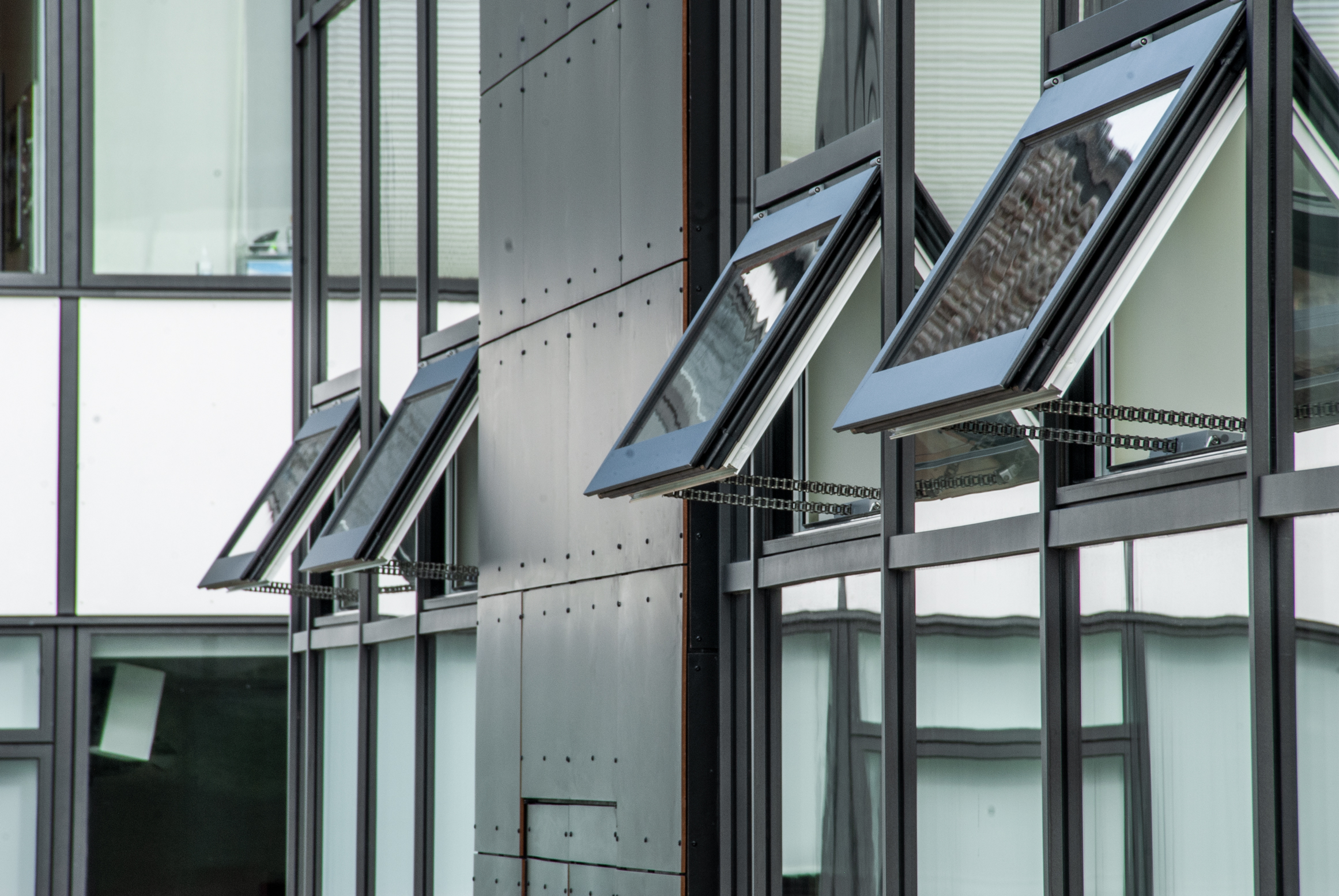As a company dedicated to window and façade automation, we often get questions about how quiet our window actuators are. That’s why we made the decision to put our actuators to the test with the Danish Technological Institute (DTI). Get the details of the results below plus how our actuators were tested.
Quiet actuators as a building design element
Just as our clients select actuators based on chain stroke or opening degree, there should also be the option of evaluating noise level as a parameter when selecting the right window actuator for a project. Noise levels from window actuators can be a key factor of consideration for your clients when they are introduced to the idea of an automated natural ventilation solution for their building. Even though the window actuators may operate for short, intermittent periods of about 5 – 10 minutes each day, the noise they produce could be viewed as an aesthetic element along with the other ventilation solutions in a building. And since acoustics continue to come to the forefront for building planners, having concrete data about the impact of the window automation solution is helpful for planners and their clients during the design process.

Do you want to know more about our quiet actuators?
We are happy to help!
When should building planners use noise level as a parameter for window actuator selection?
This parameter makes most sense when designing for an intelligent natural or hybrid ventilation solution. If you would like to use window, roof, or other façade opening automation to provide fresh air to the built environment, then evaluating the noise caused by the actuators plus distance between the openings and the occupants will help weigh the options.

Comfort ventilation or heat and smoke ventilation (SHEVs)
WindowMaster actuators specified for comfort ventilation can be programmed to open and close automatically based on presets defined by the customer. This usually includes the quietest operation possible as well as a manual override function. Manual override is typically slightly louder than what is set for automation. The reason for this is that it provides the user with auditory feedback about the operation of the actuator (opening or closing).
If you are only specifying for an automated heat and smoke ventilation solution, then noise should not be a concern. The reason for this is that actuators for this building safety function open at 100% of their speed capabilities. WindowMaster does have window actuators that can be used for natural, hybrid, and smoke ventilation in a combined solution. If this is the case for your project, then we can help you find the best product for your application; for whisper-quiet comfort ventilation or quick-opening, smoke ventilation when required.
Speed of the window actuators
This brings us to another key consideration: actuator speed. The speed of the actuator will determine, in part, the noise level of the actuator. Generally, the slower the actuator, the quieter it is. The speed levels of the actuator will also determine the level of control it can offer to the customer. This can be of special concern where natural ventilation will be used during the winter to flush CO2. Actuators that can operate with millimeter-by-millimeter precision will offer the benefit of providing fresh air to the building while avoiding uncomfortable drafts.
Want to learn more about how to select the right window actuator? See our blog 5 things to consider for window actuator selection

The Testing Conditions
DTI set up a controlled environment to test and measure the A-weighted sound pressure levels of our window actuators. The microphone measured the sound from our actuators at a distance of 1 m/3.2 ft away from the surface of the actuators and at a height of 1.6 m/5.2 ft from the floor. As window actuators may typically operate for only a short period of time and intermittently, the whole operating cycle – from fully closed to fully open to fully closed – should be used to assess the noise. The actuators were free hanging from a stable steel support with no added weight force. The measurements have been carried out in a large office room outside working hours with low background noise and with the ceiling covered with standard sound absorbent material. Further, the actuators were operated with TrueSpeed™ at an operation of 1 to 10 mm/second.
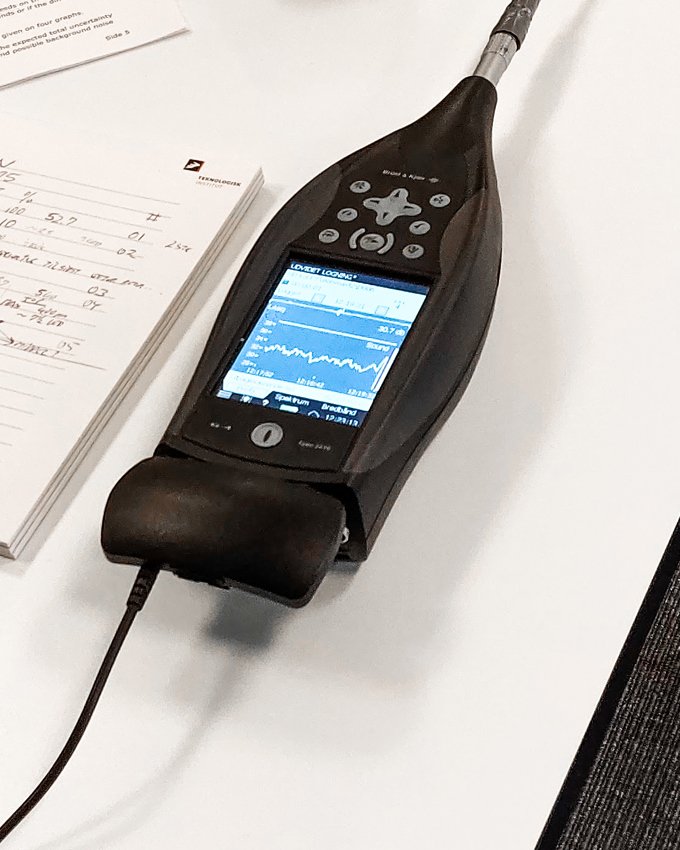
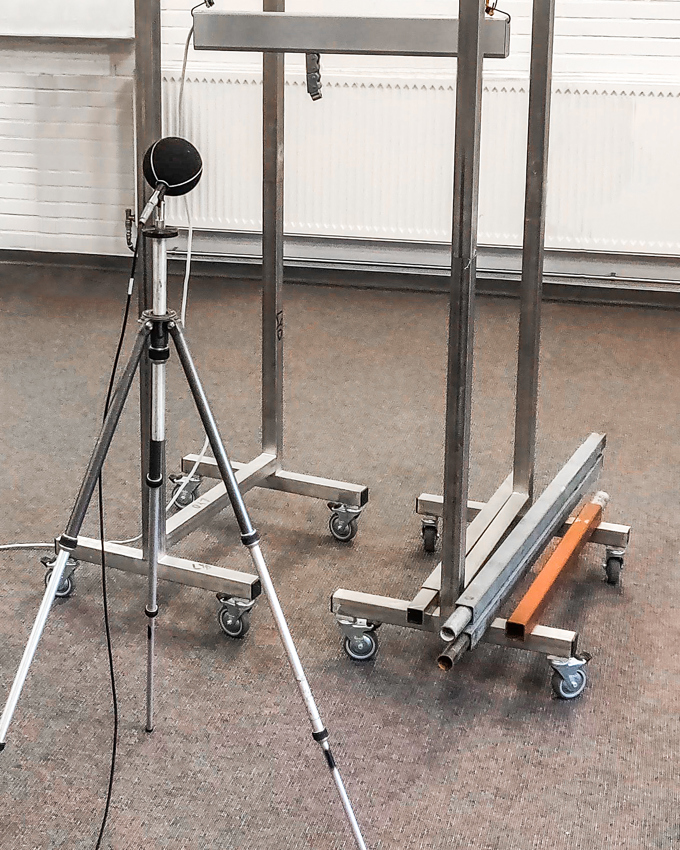
The results of how our window actuators measured up
We studied a selection of small, medium, and large chain window actuators. Why did we only study chain actuators and not spindle or locking actuators, etc.? Because most façade windows use chain actuators as these are more compact and have the possibility to be concealed in the window frame or mounted with minimum impact to the window aesthetics. In the case of mounted actuators, chain actuators provide a smaller footprint out from the window, compared to a spindle actuator, that can have a substantially interruptive range of motion.
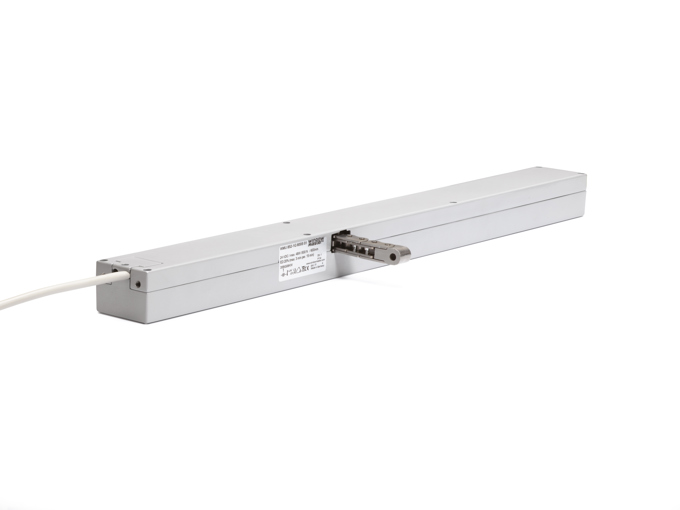
And now for the numbers
The quietest WindowMaster at an impressive when measured in individual operation. The actuators that measured at 21 dB(A) were WMU 831, WMU 851, WMU 852, and WMD 820. The actuators that measured at 25 dB(A) were WMX 813 and WMX 814. This speed is often used for precision control of comfort ventilation.
To put those measurements into context, normal breathing is measured at 10 dB(A) while a whisper is measured at 30 dB(A). These particular actuators are typically used to operate windows used in schools and office buildings where people are sitting at their desks at about 1 – 2m (3.2 – 6.5ft) from the operable windows.
| Type | Small chain | Medium chain | Large chain |
| Actuator name | WMX 813 | WMU 852/851/831 | WMU 885 and 895 |
| Measured dbA | 25 | 21 | 43 |
What is the noise measurement like for window actuators used in large skylights and windows?
Our largest actuators, WMU 888 and WMU 895 measured at 43 dB(A) while running at 100% of their opening speed. However, WMU 888 measured at a mere 35 dB(A) when running at 30% of its opening speed and the WMU 895 measured at 36 dB(A) when running at 20% opening speed. Both actuators are typically used for the heaviest windows or roof lights in high-level atrium openings, roofs, or very large public foyers in smoke and heat applications (SHEV/AOV). When heat and smoke are detected by the building’s SHEV or AOV system, actuators that are tested and approved by regulatory bodies for these applications will run at 100% opening speed. However, the distance from these actuators to the observer is usually much greater compared to operable windows in an office, school, or healthcare environment, reducing the observable noise.

An important note about distance
We conducted our test at a distance of 1m (3.2ft) between the microphone and the actuators. The distance between the operable window and the observer can have a significant impact on the perceived noise of the window actuator. For example, if you are sitting 2 m/6.5 ft away from a window actuator which was measured at 21 dB(A) using the above testing conditions, then the dB(A) level will drop by 6 to just 15 dB(A). This drop of 6 dB(A) is thanks to the Inverse Square Law. And in the case of our largest actuators, the distance between the observer and the operable window will likely be greater than 3 or 4 meters (9.8 or 13.1 feet).
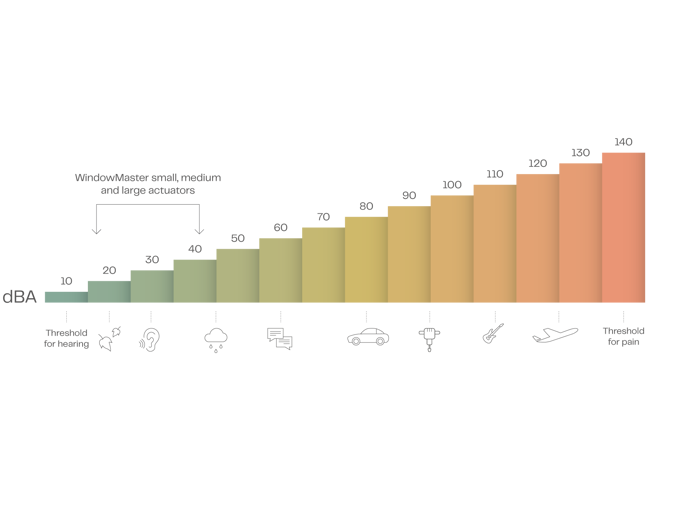
To achieve the quietest operation possible, some of our actuators can be operated with TrueSpeed™ at an operation of 1 mm/second. For example, one of our quietest, medium chain window actuators, WMU 852 was measured at an impressive 21 dB(A) while running at 1 mm/second. This technology provides flexibility in speed which provides building planners with the option of highly controlled natural ventilation. An added benefit of speed control is that it also allows for planners to keep noise levels in check while eliminating uncomfortable drafts.
The technology behind our quiet windows actuators – how it works
The technology behind our actuators is called MotorLink® and TrueSpeed. This is our window actuator technology that helps our actuators operate quietly through programmable control of opening/closing speed. MotorLink® features benefits such as controlling actuators to a specific degree of opening, genuine synchronization between actuators, and 2-way control between actuators and the BMS, among others.
Read more about MotorLink here